 |
by Emma Roth on (#6Z155)
Tesla's newly launched ridehailing service in San Francisco isn't quite ready for the robotaxi" designation. After launching its robotaxi rides in Austin, Texas, with a safety monitor" in the passenger seat last month, a video of Tesla's service in San Francisco shows a vehicle arriving with a human at the wheel, as reported earlier by [...]
|
The Verge
| Link | https://www.theverge.com/ |
| Feed | http://www.theverge.com/rss/index.xml |
| Updated | 2025-11-08 22:17 |
 |
by Sean Hollister on (#6Z156)
Epic has won again. The Ninth Circuit Court of Appeals will not overturn the unanimous jury verdict from 2023 that Google's app store and payments system have become illegal monopolies - and it appears to be pressing play on a previously paused permanent injunction that would crack open Android to undo those monopolies. Total victory [...]
|
 |
by Sheena Vasani on (#6Z11K)
Believe it or not, summer break is winding down and it's almost time to head back to school. It's sad, I know, but look at the bright side: retailers like Amazon are using the occasion as an excuse to launch yet another sale. We're not complaining, mainly because the deals encompass a wide range of [...]
|
 |
by Tom Warren on (#6Z11M)
Microsoft's stock price has risen so much today that it has passed a $4 trillion market valuation for the first time in its 50-year history. The software maker is the second company to be valued at $4 trillion, after Nvidia reached a market cap of over $4 trillion earlier this month. Microsoft has reached this [...]
|
 |
by Emma Roth on (#6Z11N)
Ford is preparing a major electric vehicle announcement that CEO Jim Farley calls a Model T moment," as reported earlier by InsideEVs. During an earnings call on Wednesday, Farley said the company will reveal plans to design and build a breakthrough" EV, along with a new platform, at an August 11th event in Kentucky. Even [...]
|
 |
by Sean Hollister on (#6Z11P)
It's always a risk betting on new video game hardware from a little-known company: what if game developers never show up? But the $50 Thumby Color, on sale this week, is an easier sell - the two-inch handheld is cute as a button, fits on your keychain, and lets aspiring programmers build and publish games [...]
|
 |
by Andrew Liszewski on (#6Z11Q)
GuliKit is following the release of its $49.99 Elves 2 Pro controller with a slightly cheaper alternative that brings a feature that's still somewhat rare among third-party gamepads: remotely waking the Switch 2. The new GuliKit Elves 2 sacrifices some of the Pro's more premium features like advanced haptics, but for $29.99 - available now [...]
|
 |
by Alex Heath on (#6Z0YK)
Hello, and welcome to Decoder! This is Alex Heath, your Thursday episode guest host and deputy editor at The Verge.Today, I'm joined by Hayden Field, The Verge's senior AI reporter. We're talking about the AI talent wars and why some researchers are suddenly getting traded like they're NBA superstars. If you've been paying attention at [...]
|
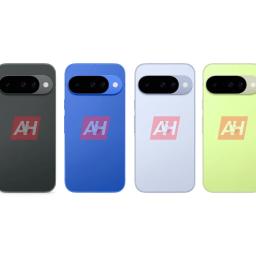 |
by Emma Roth on (#6Z0YM)
We've already seen what every Pixel 10 model looks like, and now we might know the pricing, too. A new leak from Android Headlines suggests the base Pixel 10 with 128GB of storage will have the same $799 starting price as its predecessor, while the rest of the lineup isn't seeing any major changes, either. [...]
|
 |
by Verge Staff on (#6Z0VS)
About two years ago, we ran an article in which Verge staffers talked about their favorite backpacks and other bags. It's time for a new one, and so we asked the staff to tell us about their favorite travel packs, day-to-day bags, and other ways to carry stuff around. Here's what they told us. Backpacks [...]
|
 |
by Jess Weatherbed on (#6Z0VR)
Nvidia is releasing a new GeForce Game Ready Driver today that expands support for Windows 10 devices, alongside some games and G-Sync displays. Windows 10 Game Ready Driver support will now be available for GeForce RTX GPUs until October 2026, a year beyond when Microsoft is planning to stop supporting the operating system on October [...]
|
 |
by Victoria Song on (#6Z0VV)
It was a sweltering Sunday in Brooklyn. Instead of being wasteful and spending $10 on a five-minute Uber, I decided to walk the 20 minutes to a cutesy Japanese stationery cafe with an even cutesier name. Despite the 85 percent humidity, my vanity demanded I wear a full face of makeup with a snatched nose [...]
|
 |
by Ash Parrish on (#6Z0VT)
It's been a little over a month since the Switch 2 launched, and Nintendo's ready to share more of the games coming to the console. Today's Nintendo Direct presentation will be a short one at only 25 minutes long, and focused exclusively on third-party games. It's likely that Hades 2 will make an appearance. The [...]
|
 |
by Andrew Liszewski on (#6Z0VW)
DJI has announced the company's first 360-degree action camera designed to compete with the Insta360 X5 and the aging GoPro Max (which the company is planning to replace soon). The new DJI Osmo 360 slightly edges out the X5's recording capabilities by capturing 8K videos at 50fps instead of 30fps, and features a design that's [...]
|
 |
by Jess Weatherbed on (#6Z0SH)
The menus on your next Uber Eats order may be embellished using generative AI. The food delivery service is rolling out new features that aim to help businesses advertise and communicate with customers, which include AI additions to menu descriptions, food photos, and review summaries, along with a live chat tool and payments for user-submitted [...]
|
 |
by Tom Warren on (#6Z0QF)
Microsoft first started using the "Xbox PC" term in a blog post announcing the Gears of Wars remaster in early May. It was a new branding effort designed to signal that games are available on PC through its own Xbox PC app and store. The Xbox PC branding didn't last long though, as Microsoft has [...]
|
 |
by Alex Heath on (#6Z0H5)
Mark Zuckerberg's AI hiring spree is costing a lot of money. His investors don't care. Meta's stock price shot up over 10 percent on Wednesday after the company reported better-than-expected earnings. Revenue generated in the second quarter was $47.5 billion, up 22 percent from a year ago. Daily users across Facebook, Instagram, Threads, and WhatsApp [...]
|
 |
by Jay Peters on (#6Z0FV)
President Donald Trump signed an executive order on Wednesday that will suspend the de minimis exemption - which allows packages with goods valued less than $800 to enter the US duty-free - for all countries. Earlier this year, Trump ended the de minimis exemption for goods from China and Hong Kong. The White House says [...]
|
 |
by Elizabeth Lopatto on (#6Z0E3)
Have you ever wondered what bops powerful figures are listening to on Spotify? You'd be amazed what you can get with a profile search - but just in case you want them all in one place, there's the Panama Playlists, a newly published collection of data on the musical listening habits of politicians, journalists, and [...]
|
 |
by Tom Warren on (#6Z0E4)
Microsoftjust postedthe fourth and final quarter of its 2025 fiscal financial results. The software maker made $76.4 billion in revenue and a net income of $27.2 billion during Q4. Revenue is up 18 percent, and net income has increased by 24 percent. Like clockwork, cloud services are the strong point of Microsoft's revenue this quarter. [...]
|
 |
by Andrew Liszewski on (#6Z0E5)
Analogue's 4K remake of the Nintendo 64 has been delayed again and again due to the US tariff situation. But at least you can get 8BitDo's updated take on the N64 controller, which was announced alongside the Analogue 3D, while you wait. You can get one through Amazon in white or black for $39.99 and [...]
|
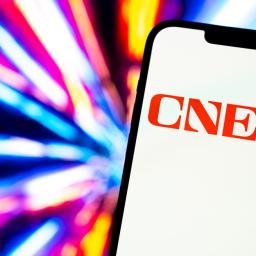 |
by Mia Sato on (#6Z0BK)
Ziff Davis, the media conglomerate that owns outlets like CNET, ZDNet, PCMag, and Mashable is laying off 15 percent of its unionized workforce, for a total of 23 people. The majority of layoffs are coming from CNET, where 19 people will lose their jobs - even as Ziff Davis goes on a shopping spree. The [...]
|
 |
by Jay Peters on (#6Z0BM)
Dropbox is discontinuing its password manager. The tool, Dropbox Passwords, will be discontinued on October 28th, and the company is recommending that you transfer your passwords to another app like 1Password ahead of that date. The company will shut down Dropbox Passwords in phases. Starting August 28th, Dropbox Passwords will be view-only from both the [...]
|
 |
by Jay Peters on (#6Z0BN)
Roblox and Fortnite are two of the biggest games around, and a huge part of why is because they aren't just one game: instead, they're vast platforms where you can party up with your friends, dress up in ridiculous digital outfits, and quickly jump from one experience to another. Back in the day, Fortnite copied [...]
|
 |
by Emma Roth on (#6Z08H)
Google will soon cast an even wider net with its AI age estimation technology. After announcing plans to find and restrict underage users on YouTube, the company now says it will start detecting whether Google users based in the US are under 18. Age estimation is rolling out over the next few weeks and will [...]
|
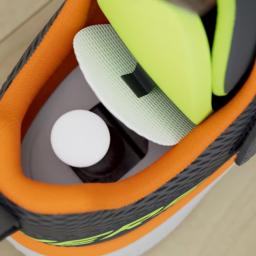 |
by Andrew Liszewski on (#6Z08J)
If you're a parent with kids in school or kids who are independently exploring their neighborhood for the first time, then there's a good chance you've considered stashing a tracker somewhere on their person for added peace of mind. Skechers is making that a little easier with a new line of sneakers for kids that [...]
|
 |
by Thomas Ricker on (#6Z05N)
Starting today, DJI's Amflow electric mountain bike range isavailable to buyin the United States. It comes over a year since the showcase for DJI's very impressive Avinox drive system was launched in Europe, sending shockwaves through the industry and leaving stalwarts like Bosch and Specialized struggling to respond. What's most impressive about the Avinox system [...]
|
 |
by Emma Roth on (#6Z05M)
On July 25th, the UK became one of the first countries to widely implement age verification. Its Online Safety Act requires sites hosting porn and other content deemed "harmful" - including Reddit, Discord, Grindr, X, and Bluesky - to verify that users are over the age of 18. The early results have been chaotic. While [...]
|
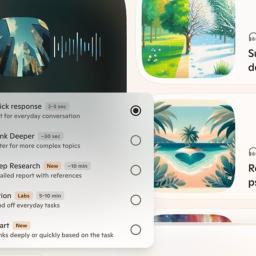 |
by Tom Warren on (#6Z05K)
I reported last week that OpenAI is planning to launch GPT-5 in early August, as part of an effort to simplify and combine its large language models. Just a day after my report, references to GPT-5 were spotted inside Microsoft's Copilot web app, hinting at a new smart mode. Sources familiar with Microsoft's AI plans [...]
|
 |
by Charles Pulliam-Moore on (#6Z05P)
While you can now start collecting Pokemon TCG Pockets Johto-themed Wisdom of Sea and Sky expansion, two of the set's rarest cards are being changed in response to concerns about art theft. Soon after dataminers began posting images of Wisdom of Sea and Sky's cards on Tuesday, Chinese artist lanjiujiu took to their X account [...]
|
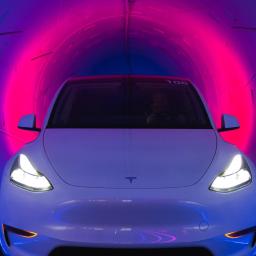 |
by Emma Roth on (#6Z05Q)
Elon Musk's Boring Company has announced plans to dig tunnels under Nashville, creating a loop that will connect the city's downtown with the Nashville International Airport. The Boring Company says it will begin construction immediately" following approval and expects the first 10-mile phase to be operational as early as next year, as reported earlier by [...]
|
 |
by Andrew Webster on (#6Z05R)
The first season of Twisted Metal was almost like a prologue. Peacock's adaptation of the long-dormant PlayStation game series spent 10 episodes setting up its car-focused post-apocalyptic world and most of the major characters, all while rattling off a never-ending barrage of jokes. But it never really felt all that much like the games it [...]
|
 |
by Brandt Ranj on (#6Z05S)
If you need a laptop for school or work, our top recommendation is Apple's 13-Inch MacBook Air with the M4 chip, which is at an all-time low price of $799 ($200 off) at Amazon and Best Buy. The machine is thin and light, yet its M4 chip is powerful enough to handle more intense workloads, [...]
|
 |
by Lauren Feiner on (#6Z05T)
President Donald Trump and other Republicans have railed for years against foreign regulation of US tech companies, including online safety laws. As the US fights a global tariff war, it may bring those rules under fire - just as some of them are growing teeth. Over the past weeks, Trump has touted a blitz of [...]
|
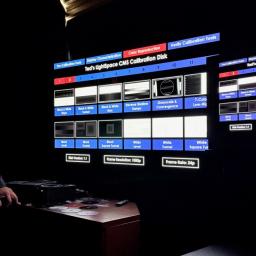 |
by Nilay Patel on (#6Z022)
The 2025 TV Shootout went down over the weekend, and the results are shocking: yes, the Sony Bravia 8 II won the overall competition and my personal award for silliest name, but the LG G5 came in last place by a huge margin. I was one of the judges, and I think I have a [...]
|
 |
by Emma Roth on (#6Z023)
TikTok is officially rolling out Footnotes, a community fact-checking program that's supposed to add helpful context to videos. With this update, US-based users will start seeing Footnotes on videos in the coming weeks, and will also get the option to rate them. After allowing people to join the Footnotes pilot in April, TikTok says almost [...]
|
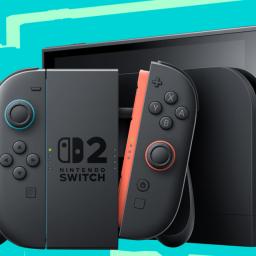 |
by Ash Parrish on (#6Z024)
Now that the Switch 2 is out, and the console's biggest exclusives - Mario Kart World, and Donkey Kong Bananza - are delighting fans, it's time to see what else this thing can do. Nintendo's hosting its next Direct presentation on Thursday July 31st bright and early at 9 AM ET. You can watch the [...]
|
 |
by Tom Warren on (#6Z025)
Adobe is finally releasing Windows on Arm versions of Premiere Pro, After Effects, Audition, and Media Encoder this week. All four apps are available as public beta versions, but they do lack some features or have some known issues compared to the versions available for Intel-powered systems. The native ARM64 version of Premiere Pro won't [...]
|
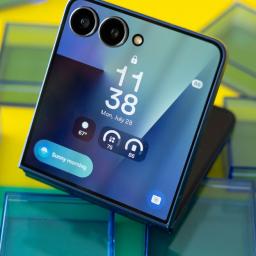 |
by Allison Johnson on (#6Z026)
It's the flip phone paradox: if you want to be more mindful about your mobile device usage, you need more screen, not less. I know. But I swear it's true: with a bigger cover screen, you get more than just a new way to check notifications. You can actually get shit done. Things that are [...]
|
 |
by Victoria Song on (#6YZZ0)
If last year's Samsung Galaxy Watch 7 was tried and true, this year's Galaxy Watch 8 is a bit more like tried and fine. This isn't overtly bad. Most smartwatch newbies will be delighted by the $349.99 Galaxy Watch 8 - provided they can stomach the new squircle design. It's more that if you've been [...]
|
 |
by Dominic Preston on (#6YZZ1)
Evidence is mounting that Google's Pixel 10 series will support Qi2 wireless charging, including built-in magnets, finally offering a mainstream Android alternative to Apple's MagSafe. The latest sign is a leaked image of the Pixel 10 with what appears to be a magnetic wireless charging puck attached to the back. The leaked image comes from [...]
|
 |
by Jess Weatherbed on (#6YZX4)
It seems YouTube is finally giving its TV app the AI feature that lets you skip to the most interesting parts of a video. Android Authority's Mishaal Rahman reports that the Jump Ahead perk for YouTube Premium subscribers appeared on his Nvidia Shield TV yesterday, a feature that was previously exclusive to YouTube's web and [...]
|
 |
by Jay Peters on (#6YZNC)
YouTube videos with strong profanity in the first seven seconds (words like fuck") are now eligible for full monetization, according to a video from Conor Kavanagh, YouTube's head of monetization policy experience. Previously, these kinds of videos were only eligible for limited ad revenue." Changes to YouTube's inappropriate language policies have long been a sore [...]
|
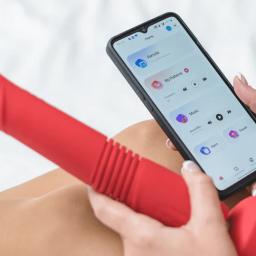 |
by Emma Roth on (#6YZKS)
Lovense, the maker of internet-connected sex toys, left user emails exposed for months - even after it became aware of the vulnerability. In a blog post spotted by TechCrunch and Bleeping Computer, security researcher BobDaHacker found that they could turn any username into their email address," which they could then use to take over someone's [...]
|
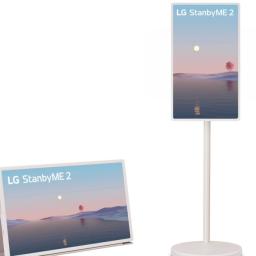 |
by Cameron Faulkner on (#6YZHN)
LG's StanbyMe 2 has all the ingredients of a good follow-up gadget: the 27-inch display is 1440p instead of 1080p, and instead of being trapped on its rollable stand, the screen is detachable for you to use wherever and however you want. It can hang on the wall if you buy a compatible strap, or [...]
|
 |
by Tom Warren on (#6YZHP)
Microsoft has used avariety of tricksto convince people to keep using the defaults of Bing and Microsoft Edge in Windows over the years, including modifying Chromedownload sites and usingmalware-like popups. Now, Opera is fed up of what it calls Microsoft's manipulative design tactics" and filed a competition complaint in Brazil today, alleging that Microsoft is [...]
|
 |
by Andrew Liszewski on (#6YZHQ)
Sharge has demonstrated again and again that the chargers and power banks you use to keep your devices running don't need to look like boring gray bricks. The company has updated its transparent Retractable 65 wall charger, released earlier this year, with a 10,000mAh battery so it's no longer completely dependent on an outlet. The [...]
|
 |
by Jay Peters on (#6YZHR)
OpenAI is adding a new study mode for ChatGPT that helps you work through problems step by step instead of just getting an answer," according to an OpenAI blog post. It will be available today for ChatGPT Free, Plus, Pro, and Team users and for ChatGPT Edu users in the next few weeks." When you [...]
|
 |
by Brandon Russell on (#6YZF2)
If you spend a lot of time gaming on the PlayStation 5, you may want a controller that can offer more customization than the standard DualSense. The pro-style DualSense Edge is worth considering, especially now since it's currently down to $170 ($29.99 off) on the PlayStation website with the code EVO2025 through August 4th. The [...]
|
 |
by Ash Parrish on (#6YZF3)
Two of the biggest digital games stores have stopped selling thousands of titles following pressure from a coalition of anti-porn advocates and the world's biggest payment processing companies. It's happened before, will likely happen again, and is suppressing art, free expression, and marginalized creators. Last week, the indie gaming storefront itch.io sent out a sudden [...]
|